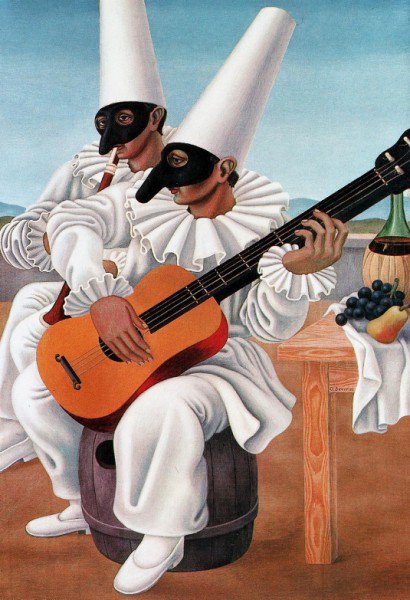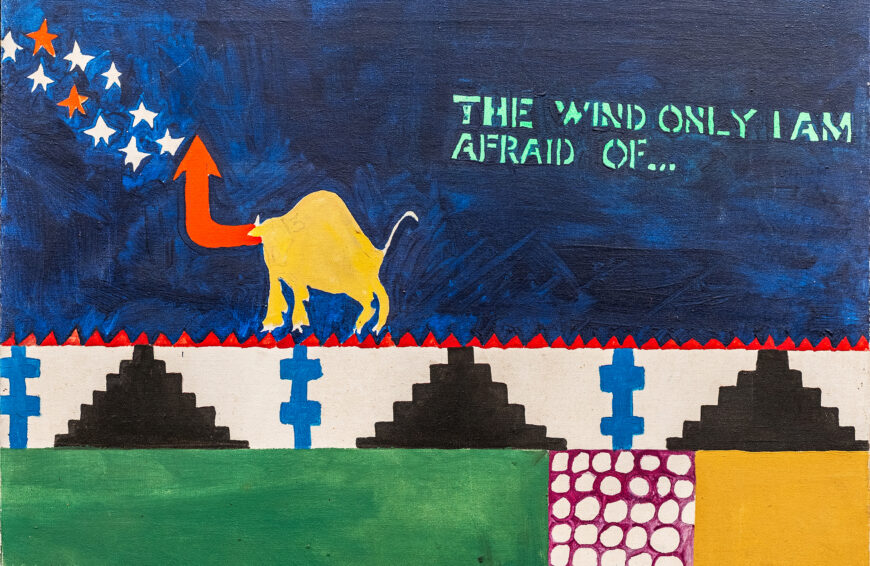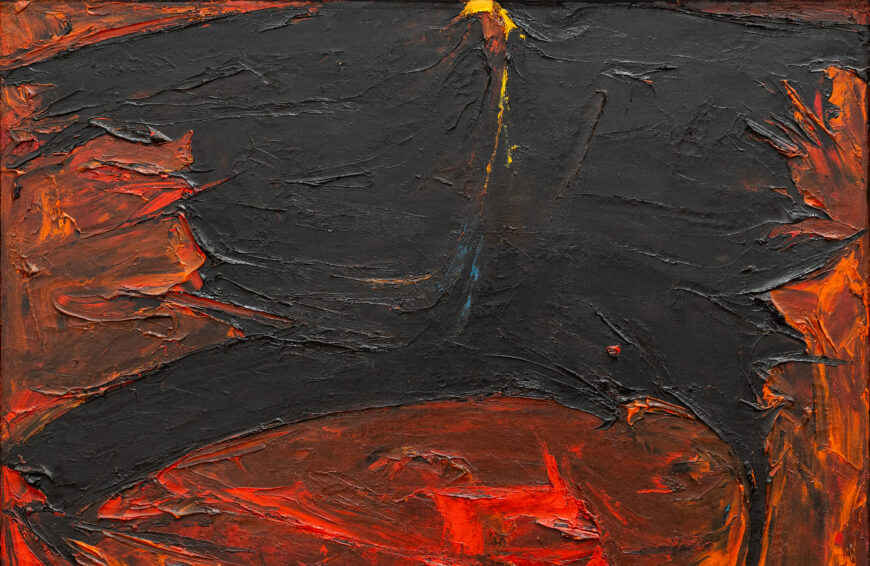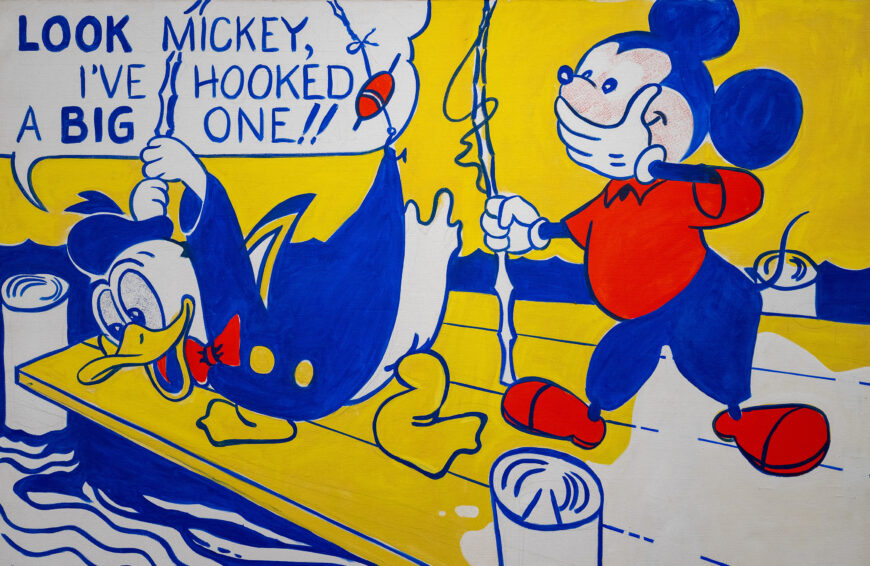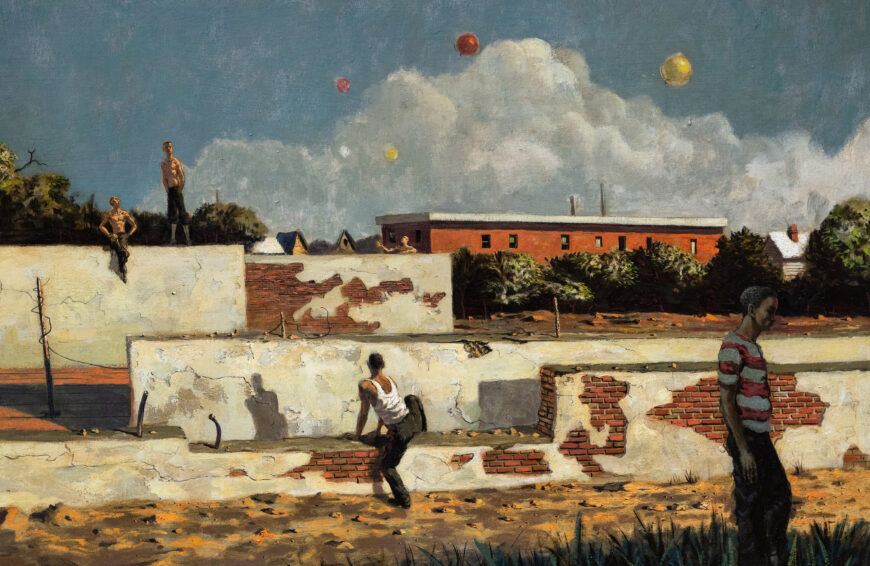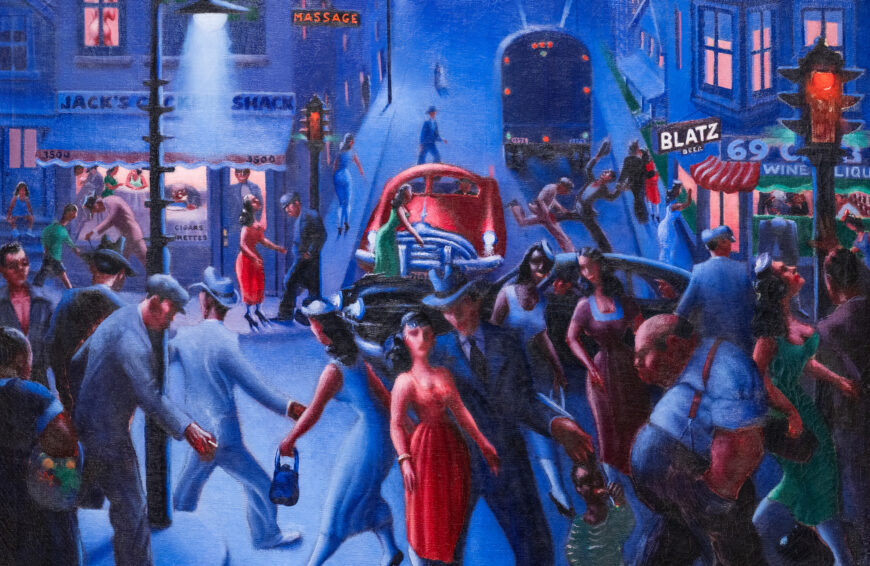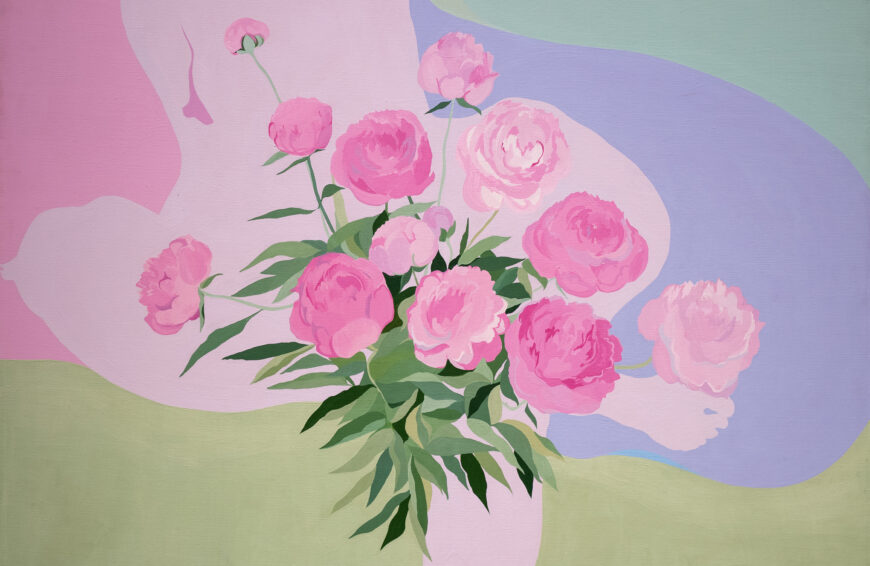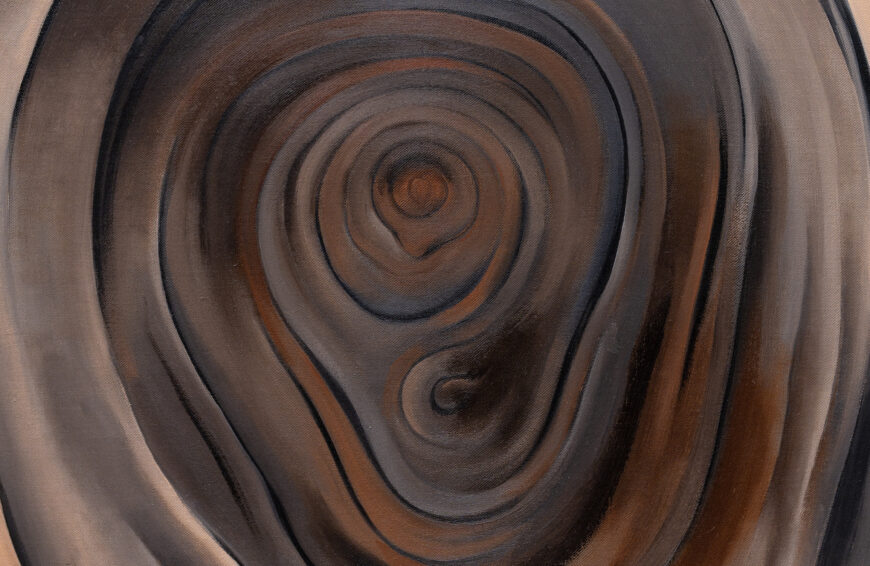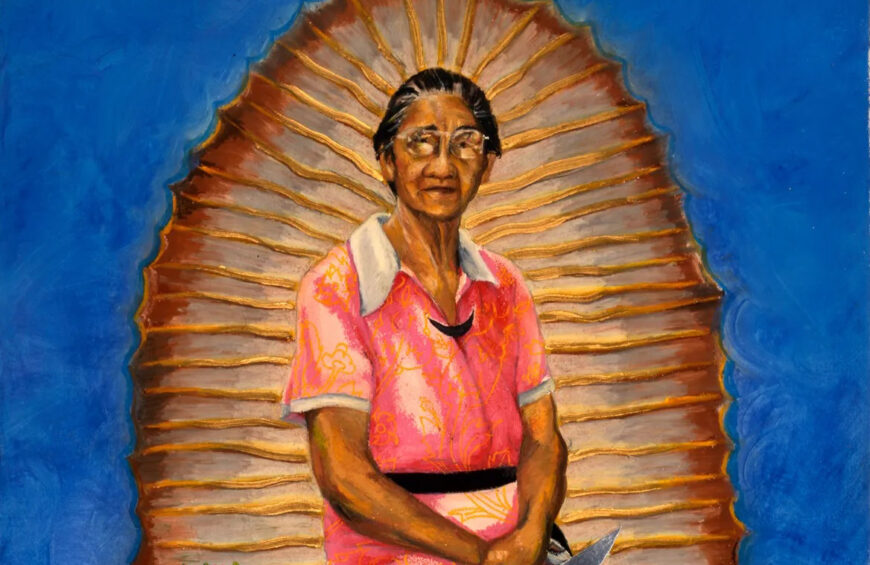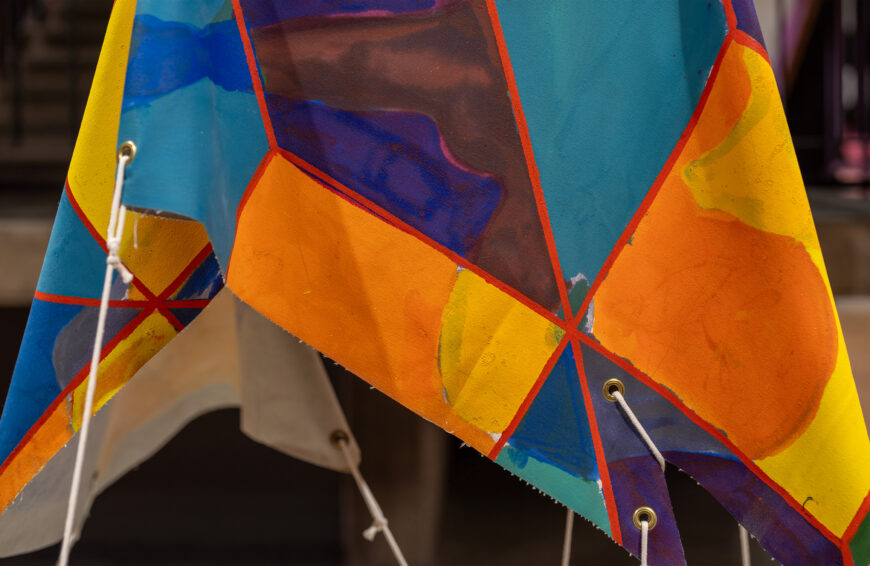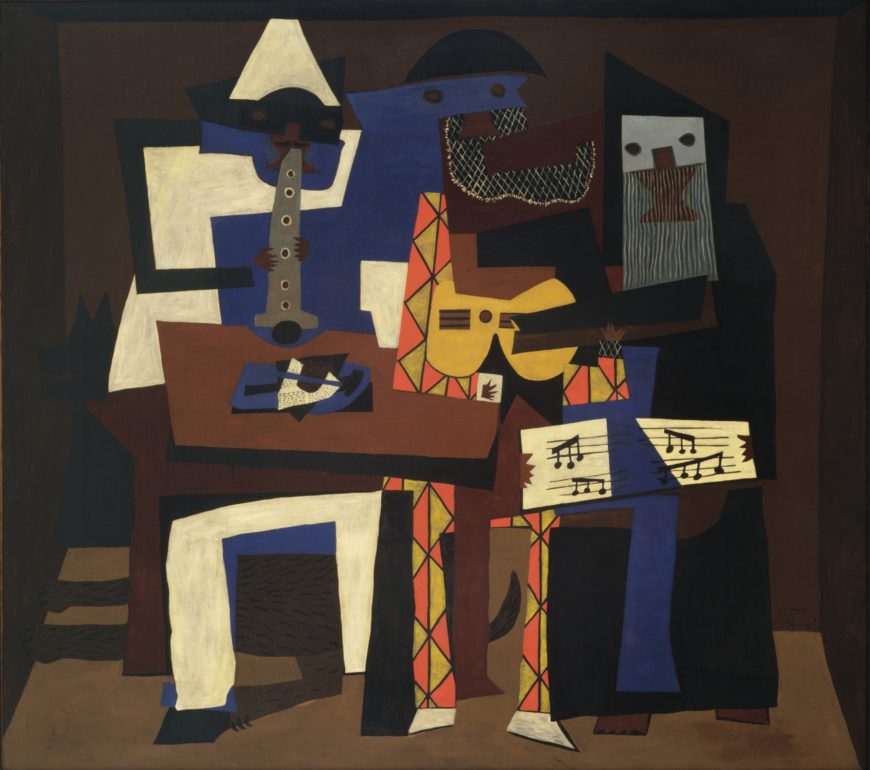
Pablo Picasso, Three Musicians, 1921, oil on canvas, 200.7 x 222.9 cm (MoMA)
Picasso’s Three Musicians presents three figures painted in a decorative, brightly colored, Synthetic Cubist style. It is one of two very large paintings of the same subject that Picasso painted in 1921, both interpreted to be symbolic group portraits of the artist and two old friends. In this version, Picasso is the Harlequin figure wearing the bright diamond patterned suit in the center. The white Pierrot figure on the left is thought to be the poet Guillaume Apollinaire, while the dark figure of a monk on the right represents the poet Max Jacob.
An old subject made new
Both Harlequin and Pierrot are characters from the traditional Italian theater known as commedia dell’arte. Picasso depicted these characters throughout his career, personally identifying with the trickster Harlequin.
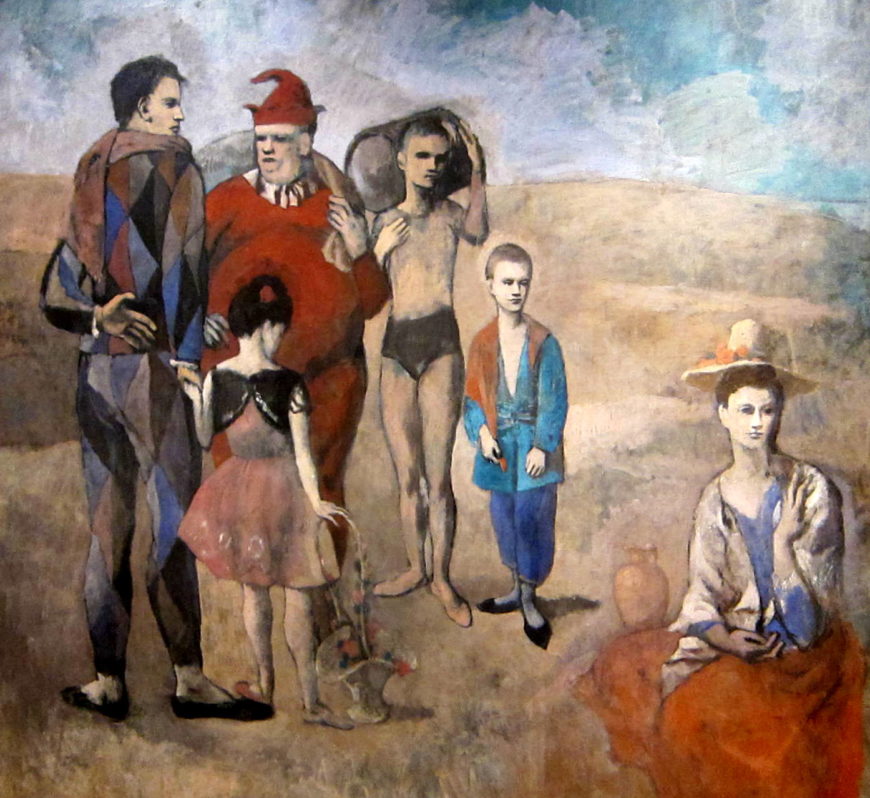
Pablo Picasso, Family of Saltimbanques, 1905, oil on canvas, 83 3/4 x 90 3/8 inches (National Gallery of Art, Washington)
In his early Family of Saltimbanques, Picasso portrayed himself as Harlequin standing in a group of figures, two of whom have also been identified as representing Apollinaire (the red jester) and Jacob (the small acrobat in blue). When Picasso painted Three Musicians sixteen years later he had lost both friends; Apollinaire had died in 1918, and Jacob had recently entered a monastery.
Although it is an oil painting, Three Musicians looks like a collage made from cut out pieces of colored paper. The forms are simplified into angular shapes that interlock like a jigsaw puzzle, and the flat colors create a surface pattern with multiple spatial ambiguities. Dark brown is used for the background wall and also for a foreground table, parts of the figures’ faces, and the silhouette of a dog lying under the table. Harlequin’s mask is part of a large, complex blue shape that covers much of the Pierrot. The same blue appears in the lower portion of the painting, possibly as furniture, and on the table top as part of a still life. While some objects are easily identifiable — the guitar in the center, the sheet music, and the clarinet on the left — others, like the pile of objects on the table, are less clear.
A retrospective presentation of Cubism
Three Musicians reads like a retrospective presentation of Cubism and its elements. Picasso painted Harlequin’s hand in brown on a small white square close to the center of the painting, making it the pivot of the composition. It represents both collage and the artist’s creative hand. Not only is the painting’s style derived from Cubist collage, it contains multiple references to earlier Cubist works.
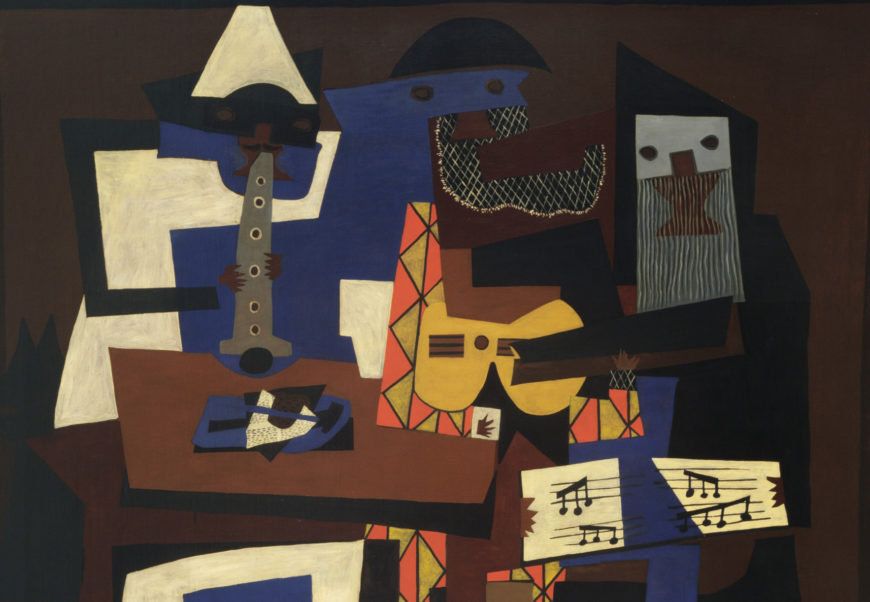
Pablo Picasso, Three Musicians, 1921, detail (MoMA)
The clarinet, guitar, and sheet music were standard objects in Cubist still life paintings. Prominent among the objects depicted on the table to the left is the painted representation of a cut out piece of newspaper, a primary material of early Cubist collage. The light blue face and beard of the monk is in the form of a wood comb, a decorator’s tool used by Braque and Picasso to create fake wood grain in many Cubist works. The diamond pattern of Harlequin’s suit, as well as his ruff and left cuff, echo the lattice pattern both Picasso and Braque used to structure many Analytic Cubist paintings. Also, according to tradition Harlequin’s suit is made from patches, a particularly appropriate costume for one of the inventors of Cubist collage.
A new decorative approach
Three Musicians is part of a significant shift that occurred in Picasso’s art after 1914. This was the year World War I began, and it marked the end of his close working relationship with Georges Braque, who joined the French army. After 1914 Picasso made few collages. Instead, he deployed his Cubist strategies in the traditional medium of oil on canvas, which allowed him to create paintings that were much larger and more decorative. This new approach had one very practical advantage; oil paintings could be sold at higher prices. Man with a Pipe is an early example of this shift.
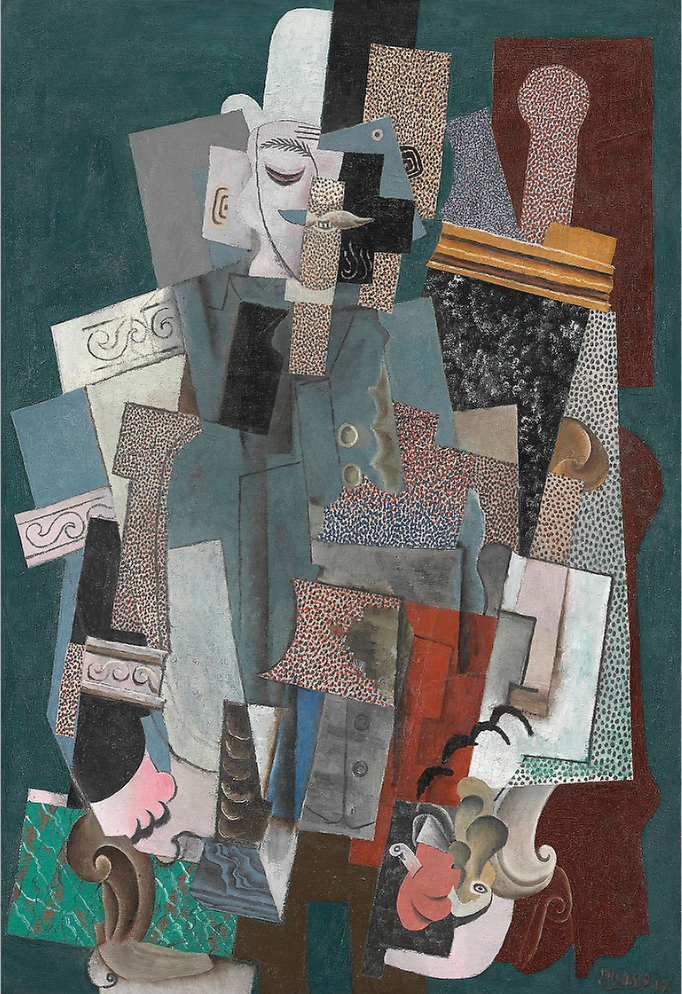
Pablo Picasso, Man with a Pipe, 1915, oil on canvas, 51 1/4 x 35 1/4 inches (Art Institute of Chicago)
Measuring a little over four by three feet, it is a painted illusion of collaged layers of different colored and textured papers. The bright colors and stippled planes form a richly decorative pattern, very different from Picasso’s actual collages of rather grubby odds and ends. Despite the new emphasis on color and pattern, Picasso’s trademark Cubist play with illusionism is still present, appearing not only in the representation of collaged paper fragments, but also in the painted decorative textures of marble and wood in the lower left.
A new theatricality
Another significant change that occurred during the war years was Picasso’s involvement with the Ballets Russes. Beginning in 1916, Picasso designed costumes and stage sets for the ground-breaking ballet company, often using the stylistic innovations of Synthetic Cubism in his designs.
Picasso’s involvement with the ballet paralleled conservative trends in his work during and after World War I. In its highly theatrical presentation of Cubist elements, Three Musicians showcases the radical innovations of modern art, but the painting also has many conservative elements.
It is a large-scale, multi-figure oil painting in the tradition of the masterpiece. Despite its spatial ambiguities and inconsistencies, the figures are placed in a shallow stage-like space defined by receding orthogonal lines in conformity with linear perspective techniques for representing depth.
Three Musicians, like Picasso’s designs for the very aristocratic art form of ballet, indicated that Cubism was no longer truly subversive. It had become a fine art.
Turn to tradition
One of the most startling transformations in Picasso’s art during World War I was his return to traditional naturalistic representation. He was not alone; the years of reconstruction following the war were dominated by a widespread cultural desire for a “return to order.”
Many formerly radical modern artists adopted traditional styles and subjects during this period of intense nationalism in France, when the extreme innovations of modern art were often regarded as foreign (German) and suspicious. The commedia dell’arte subject of Three Musicians is itself traditional and was particularly popular in the conservative political and cultural climate of World War I and its aftermath.
During this period Picasso painted many commedia dell’arte figures using traditional naturalistic techniques, as did other prominent modern artists, including the former Italian Futurist Gino Severini.
The same summer that he painted the two versions of Three Musicians, Picasso also painted the much more traditional Three Women at the Spring, which uses chiaroscuro modeling to represent classical figures based on Ancient Greek sculpture.
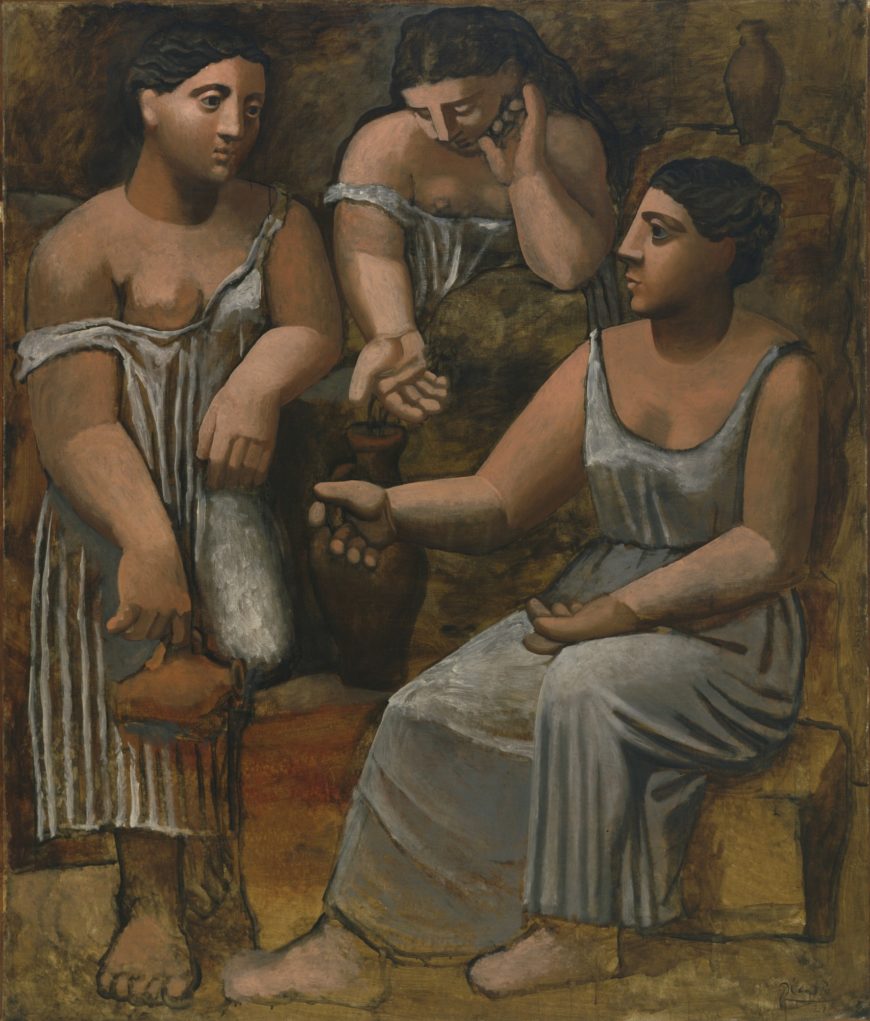
Pablo Picasso, Three Women at the Spring, 1921, oil on canvas, 203.9 x 174 cm (MoMA)
Despite obvious differences of style and subject, the paintings are all large, centralized, and balanced compositions, with three monumental figures compressed into a shallow, frieze-like space. The paintings display Picasso’s simultaneous commitment to two different styles of representation: classical naturalism and Cubism. Three Musicians can thus be seen as reconciling the two, making Cubism into a style that is appropriate for masterpieces in the traditional sense of large scale ambitious multi-figure paintings.




